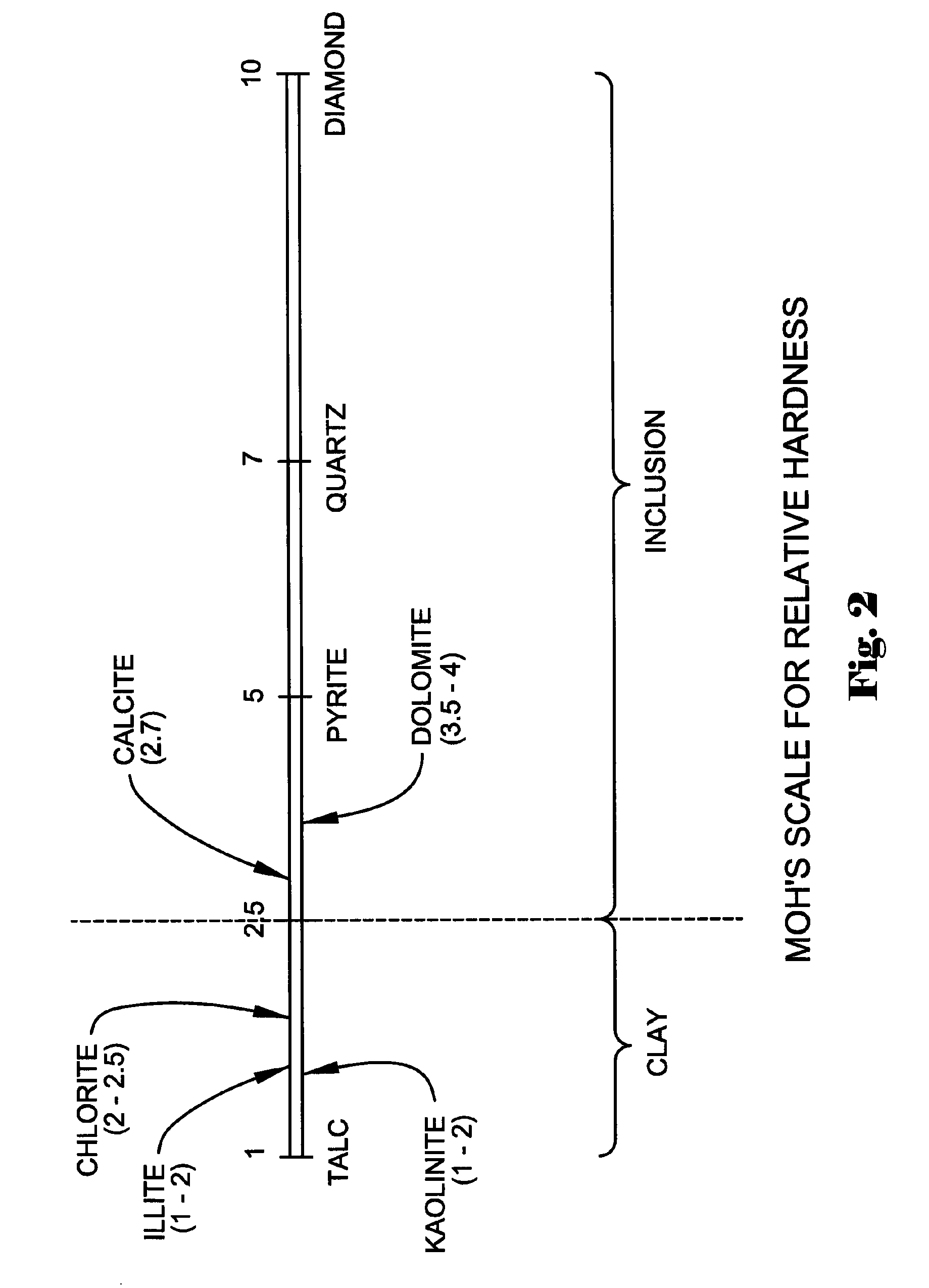Method of predicting mechanical properties of rocks using mineral compositions provided by in-situ logging tools
a mineral composition and in-situ logging technology, applied in seismology for waterlogging, instruments, borehole/well accessories, etc., can solve problems such as cost-effective operation
- Summary
- Abstract
- Description
- Claims
- Application Information
AI Technical Summary
Benefits of technology
Problems solved by technology
Method used
Image
Examples
example
[0049]The Woodford shale is emerging as a major gas formation in the United States. Despite tremendous potential, existing data on the Woodford shale geomechanics characterization are limited. In this example, a well in the Woodford shale formation, 200 feet deep, was cored and logged in Oklahoma, USA. A suite of logs, including an ESC log and a sonic log, were run in the well. Mineralogy quantification was conducted by XRD and ultra pulse velocity (UPV) on the obtained core samples at random depths.
[0050]At a depth of 188 ft. 11.5 inches, the mineralogy quantification from XRD and the ESC log were compared. FIG. 4 shows the ESC log result of the Woodford shale as a function of depth. FIG. 5 is a table of the ESC log results for specific depths. FIG. 6 a table of the XRD results from the same depths. FIG. 7 is a table showing mass percentage of mineralogy from the XRD results and the ESC log. FIG. 8 shows the effective porosity of the formation as a function of depth.
[0051]A simulat...
PUM
 Login to View More
Login to View More Abstract
Description
Claims
Application Information
 Login to View More
Login to View More - R&D
- Intellectual Property
- Life Sciences
- Materials
- Tech Scout
- Unparalleled Data Quality
- Higher Quality Content
- 60% Fewer Hallucinations
Browse by: Latest US Patents, China's latest patents, Technical Efficacy Thesaurus, Application Domain, Technology Topic, Popular Technical Reports.
© 2025 PatSnap. All rights reserved.Legal|Privacy policy|Modern Slavery Act Transparency Statement|Sitemap|About US| Contact US: help@patsnap.com



